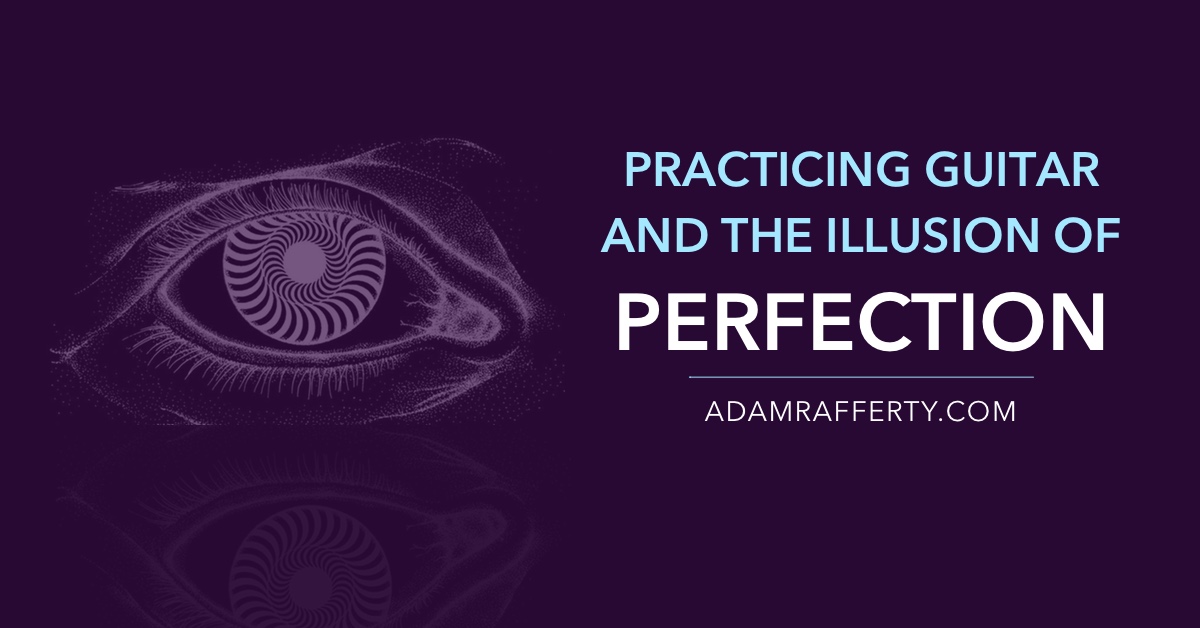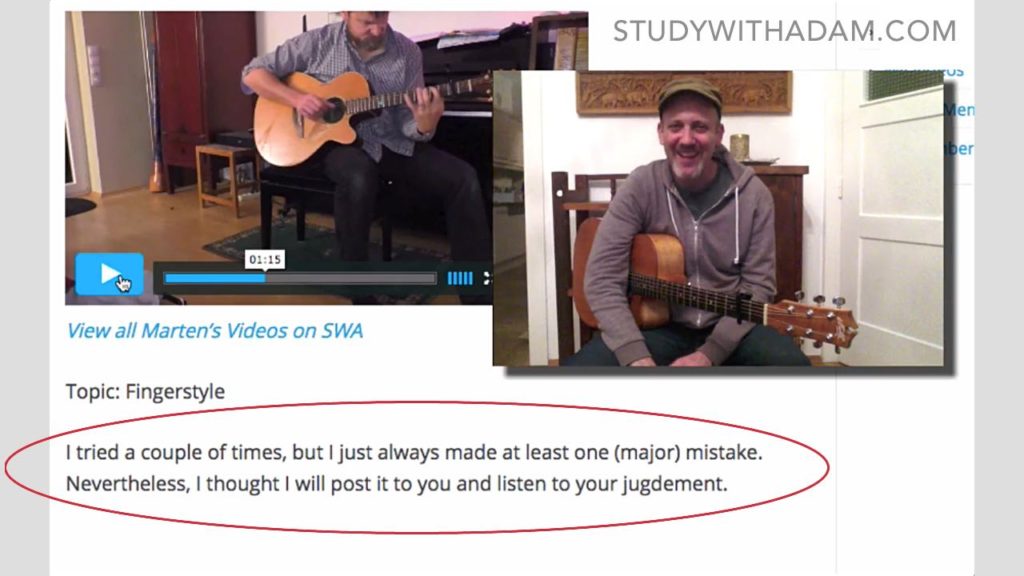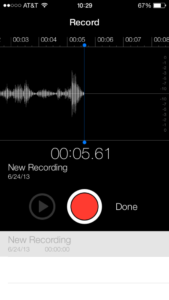 I have a lot of students uploading videos to me on StudyWithAdam.com, and often they’ll send a note along with their video upload:
I have a lot of students uploading videos to me on StudyWithAdam.com, and often they’ll send a note along with their video upload:
“Adam, I could not play this without making mistakes, but here is the best I could do….”
First off…I’ll admit it…I am as guilty as you are 🙂
I strive to play “perfectly”, and I am willing to practice things over and over until I
get them as close to perfect as I can.
Yet, it seems that no matter how much I practice, there always seem to be spots where there’s something that bothers me. Or, some things can feel great one day, and on the next day feel like the most foreign, weird thing in the world.
Here is a recent upload from my student Marten…check out what he wrote me:

I’d like to address this idea of perfection and “no mistakes.”
The cure is a shift in how we perceive what is “perfect.”
Much of our educational system and society grades us with “red x’s go next to mistakes.”
Music is not like that though. Well, school is, but real life isn’t 🙂
Playing without mistakes, blips or bumps sure is “nice”…but there is a higher perfection, a “zone”, a sound and flow that’s even more important.
Allow me to convey a recent experience to you that was an eye opener.
I was recently on tour in Australia with my good friend Michael Fix and I was practing like a maniac. I was trying 3 different technical right hand approaches to how I play “Misty.”
- Bare Thumb
- Flat pick & Hybrid picking
- Thumb pick
Each had a “positive” effect on one part of the tune, but usually made another part of the tune harder, or unplayable. It was a toss up between groove, sound and actual right hand comfort.
So there I was – having opened Pandora’s box, in search of “perfection”.
Nothing felt 100% right since I was in 3 directions and not committed to one. I was spinning in circles.
At soundcheck one night I asked Michael to listen to all 3 different approaches to “Misty” through the stage sound system, before the audience arrived.
I was SURE he’d hear exactly what I had been struggling with, and give me a clear decisive answer. Then I could relax, right?
Just as I feared…his eyes twinkled, he giggled and no matter which technique I used – he said “I can’t tell the difference…It all sounds like Adam, and it sounds great!”

I had to laugh at myself. I wanted to whine and tell him he wasn’t listening hard enough, but I knew he was clearer than I.
Mind you, I had spent hours of total obsession, weighing these “radically different approaches”, and experienced self inflicted misery of “Oh my God, I now need to change my entire approach to playing and re-learn everything I play!”
So…What do Listeners Actually Hear?
This is mysterious. I can tell you this though – they are not listening on the level of “mistakes” and writing red x’s when we miss a note here and there.
Listeners hear “flow”…and there are essentially 2 flows in music which are closely related – melody and groove.
When you isolate a “mistake” or the “technique” and look at it under a microscope, chances are very good that you are NOT in flow, and therefore not listening to “the music.”
The Small Picture vs The Big Picture
Imagine that you are riding a bike and you hit a small bump. You feel it, but does anyone know it even happened? Of course not – everyone else sees you coasting by on the bike!
Or – imagine that Miss America or a supermodel chips a corner of nail polish off her pinky nail. For them it’s a big deal – but does anyone else notice or even care? I think not.
This is not a cop out to say don’t practice or fix trouble spots to the best of your ability. We all have to do our guitar homework, but know this – on recording, on stage, and in the ears of people – flow is “the boss.”
Can You Practice Flow?
Yes! The best remedy is to truly experience your “mistakes” as unimportant.
I suggest listening back to yourself on a recording so you can percieve it like a listener.
I have found my new favorite practice tool to be the voice memo app on my iPhone.

When I record myself practicing, it often goes like this.
AR Perception While Playing:
- Oh man, this sucks.
- The thumbpick sounds so harsh and doesn’t groove enough.
- The tone on the melody is not sweet enough.
AR Perception While Listening Back:
- Wow it didn’t sound so bad! 🙂
- Groove is cool, melody is cool.
- Gee, I should grunt & vocalize less.
- What? The percussive clicks were way too loud!
When you listen back, you hear weaknesses you didn’t even know existed.
And what you thought was weak may actually sound strong.
If you can tap your toes listening back to yourself, chances are others can too.
In Conclusion
I hope that this idea of re-orientation helps you forgive yourself and enjoy playing more.
Try a recording app. How you listen during playback will then influence how you play, because you’ll have new priorities and a new orientation.
Rock on!
Happy New Year Adam – I am glad to see that you are busy as ever bringing your music to the world at large. In reading this piece I was reminded of something I learned from you years back when you spoke of making a piece ‘bulletproof’ when getting it ready to perform. I have embraced that approach but in the process I have learned that bulletproof does not mean you don’t get hit by the occasional bullet, i.e. make a mistake – just that the impact is not fatal, sort of like wearing a Kevlar vest. Now, as ever, I strive to play my best in performance but I also know, just as you have said, that if I stay in the groove and keep the flow flowing seldom will anyone but me will know when my vest has taken a hit. Happy New Year my friend and I hope to connect with you in person soon.
Jay – great to hear from you and thanks for commenting.
Happy Holidays and New Year!
AR
Great article! I don’t think I have ever really been able to play anything perfectly! I overcame this fear when asking multiple people if they heard all of my mistakes during a performance. When they had no idea what I was talking about I started to relax a little more when playing in front of people. Love the idea of the recording app by the way – I’m going to have to try that one.